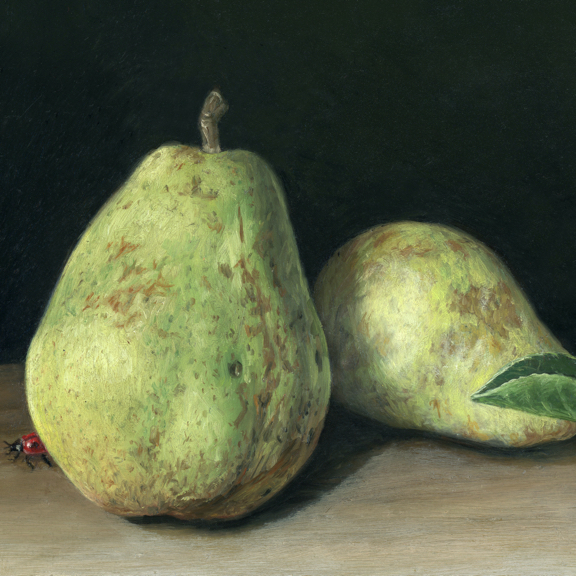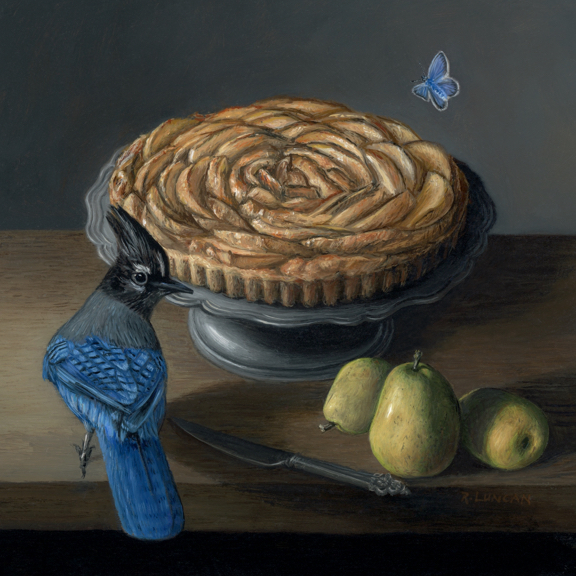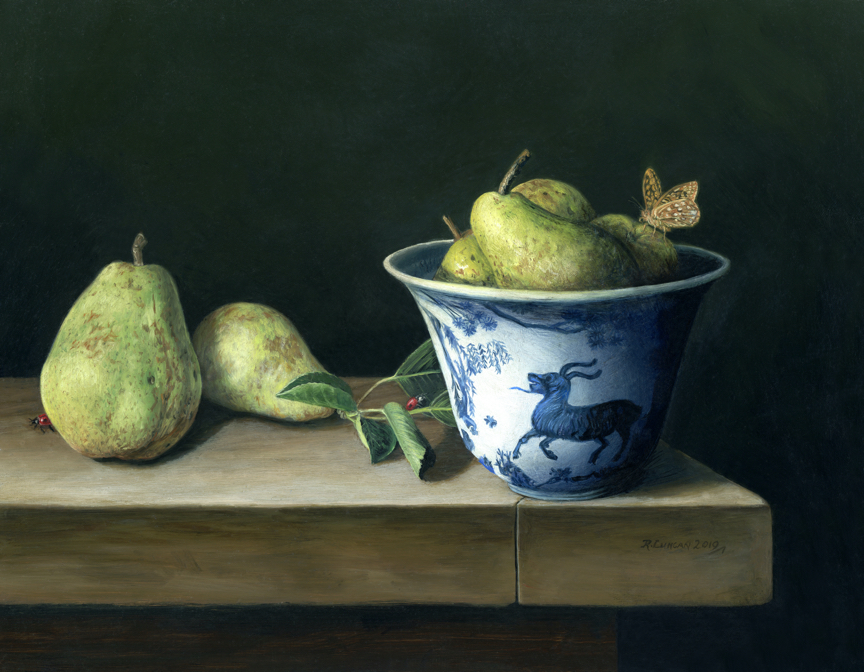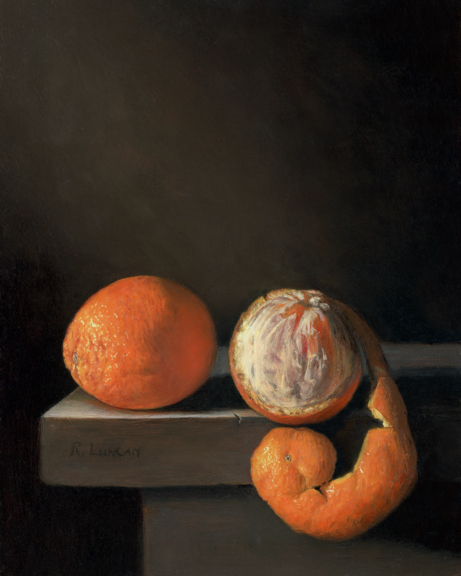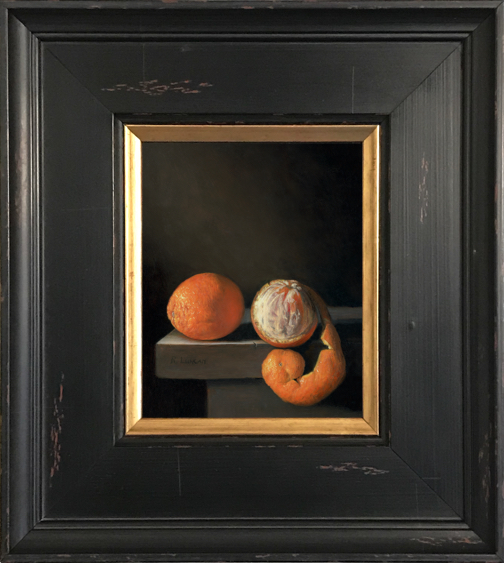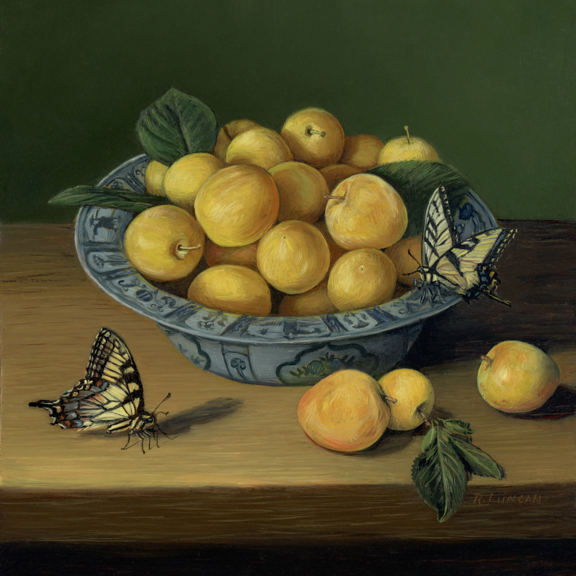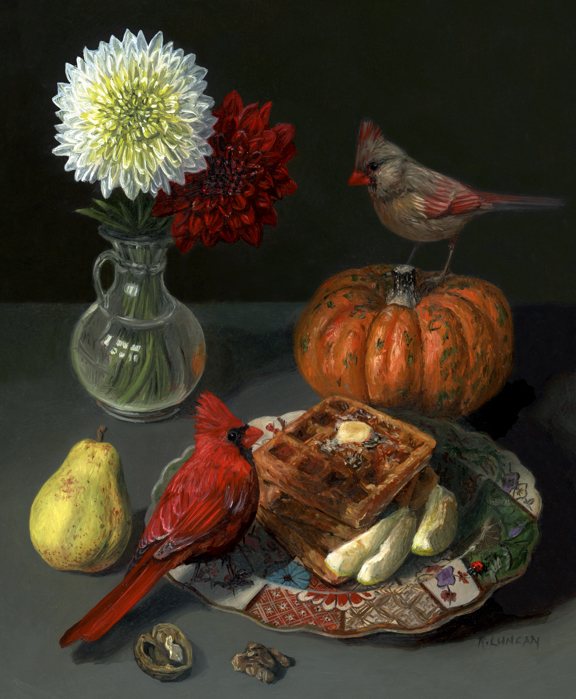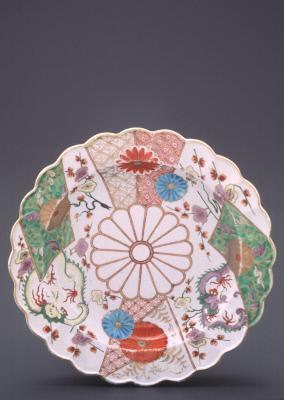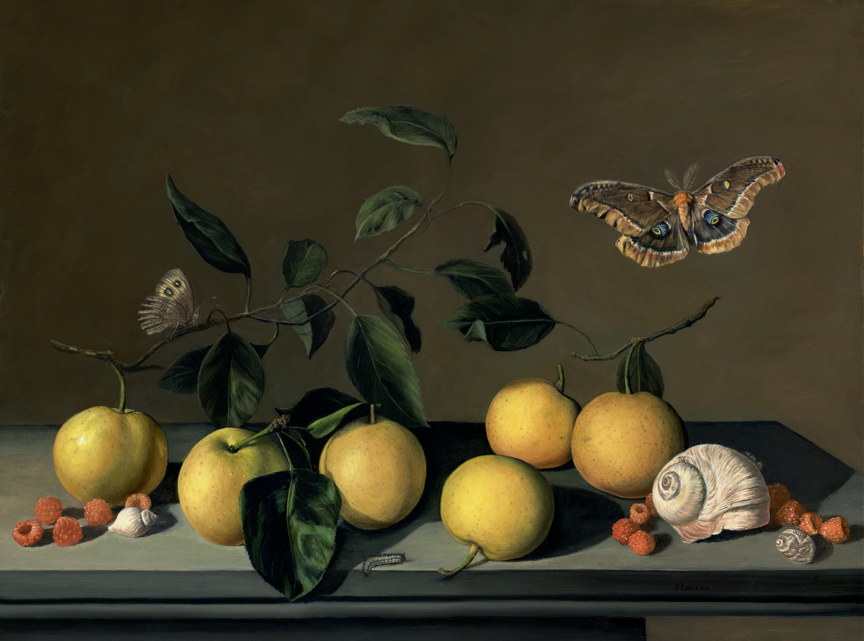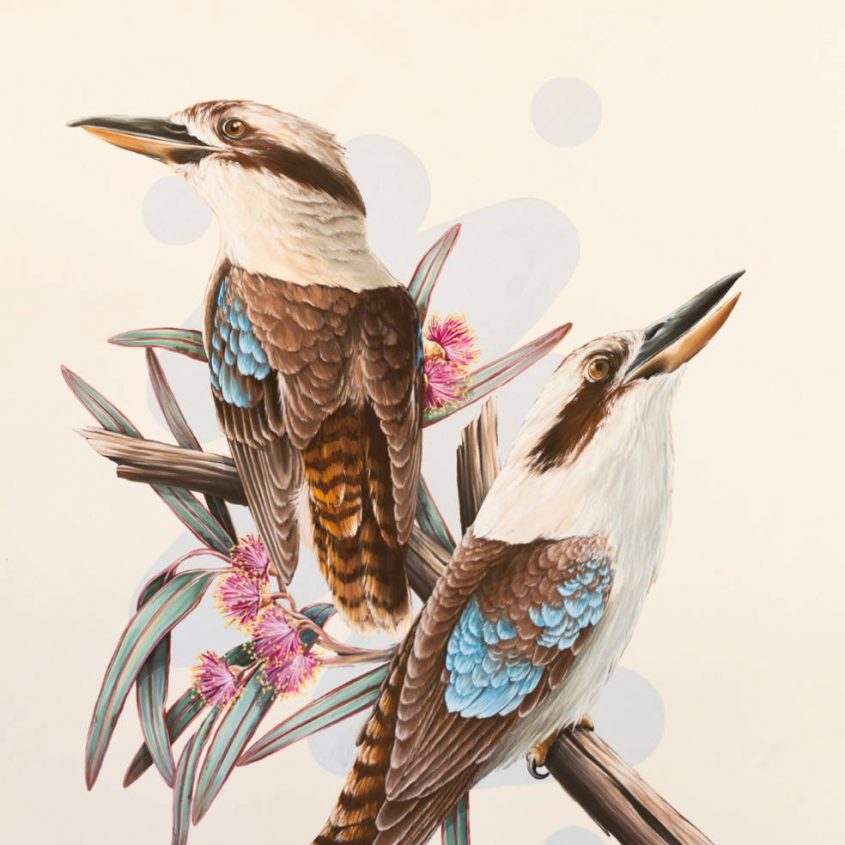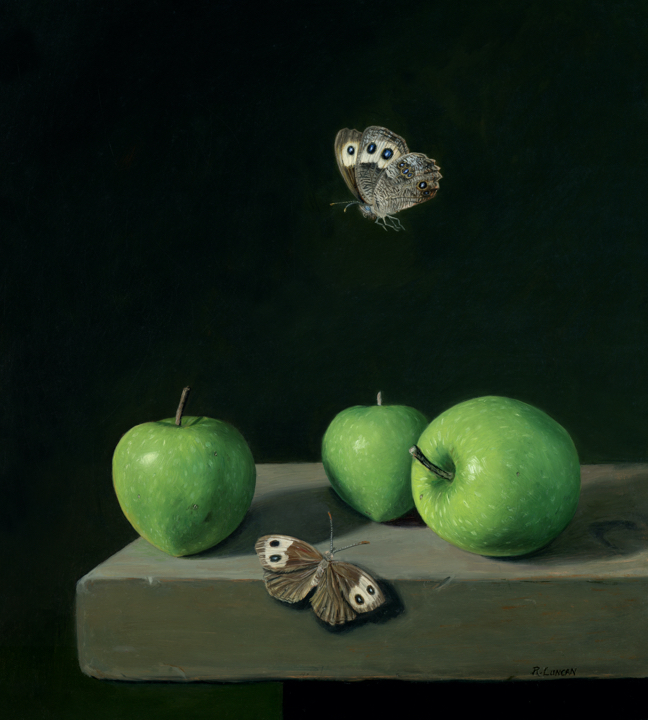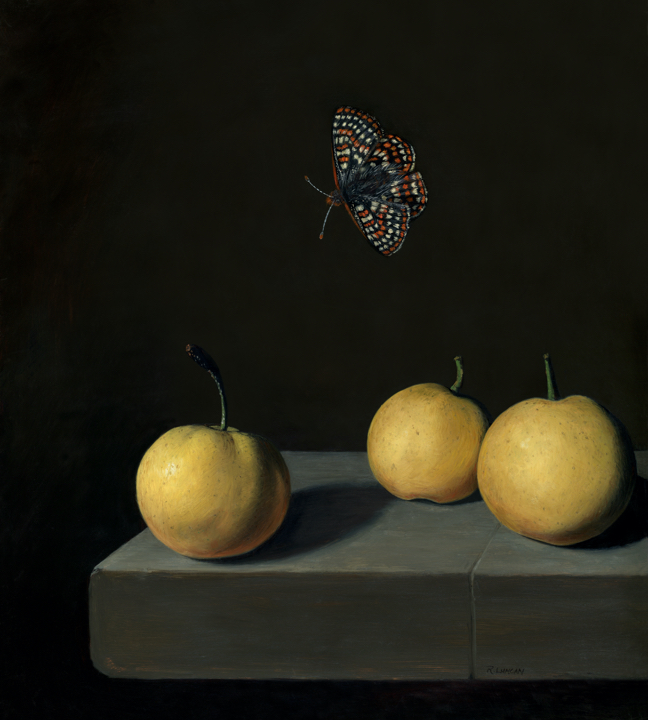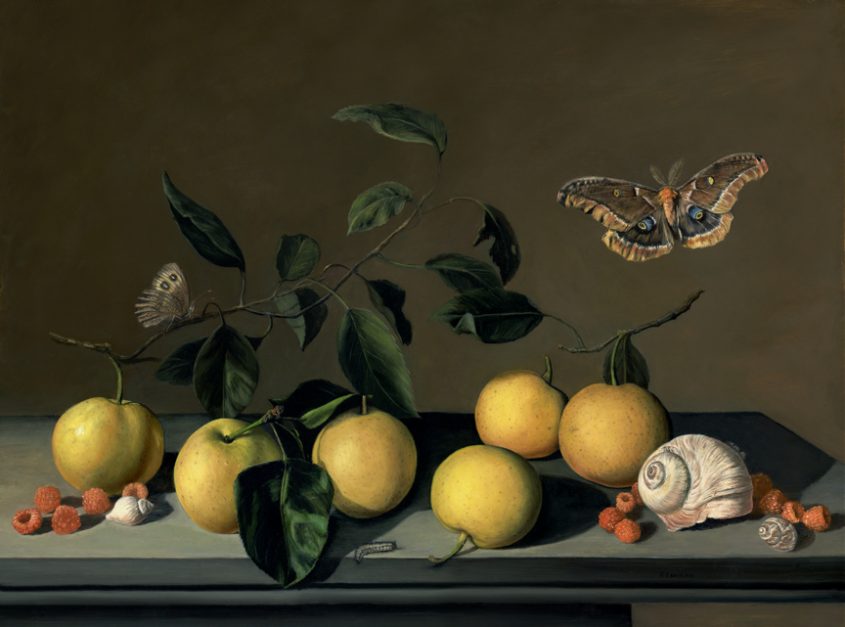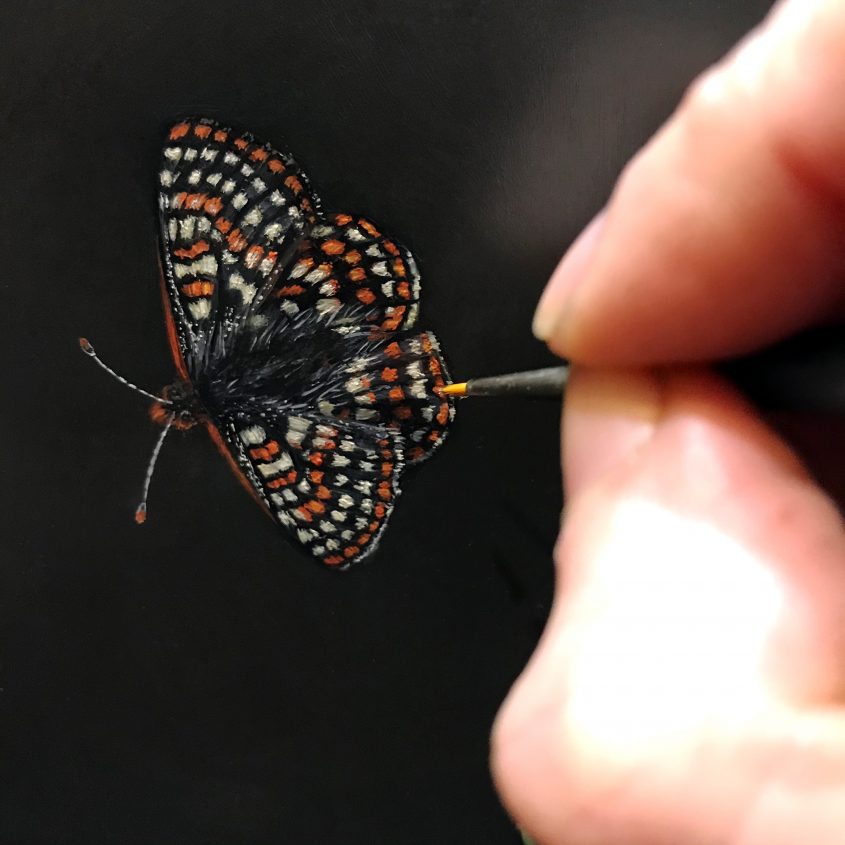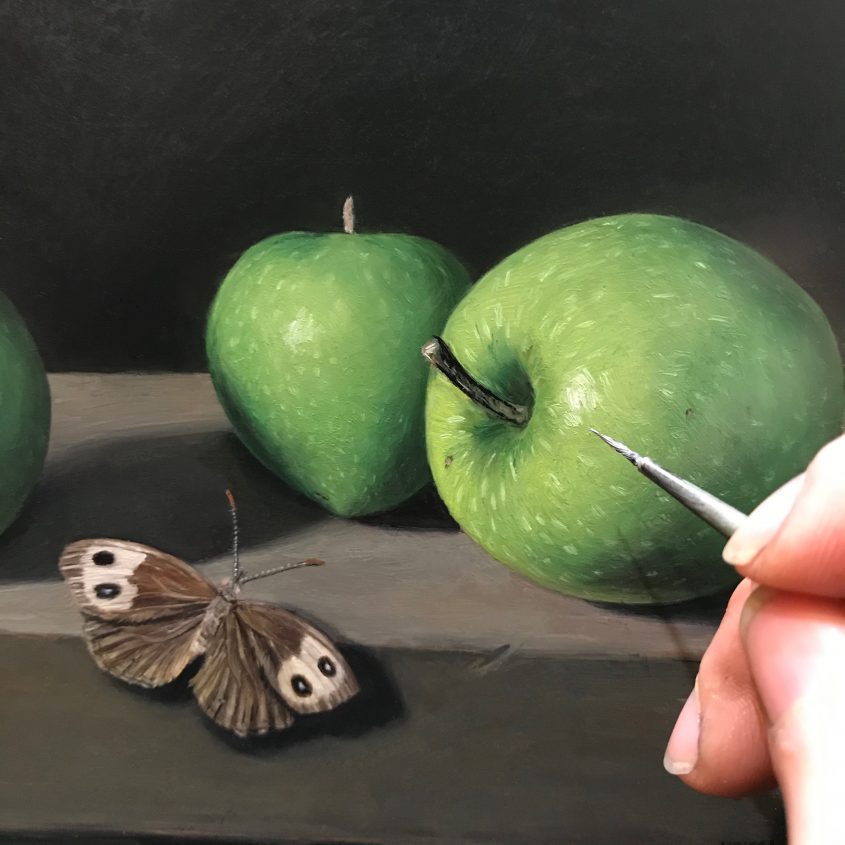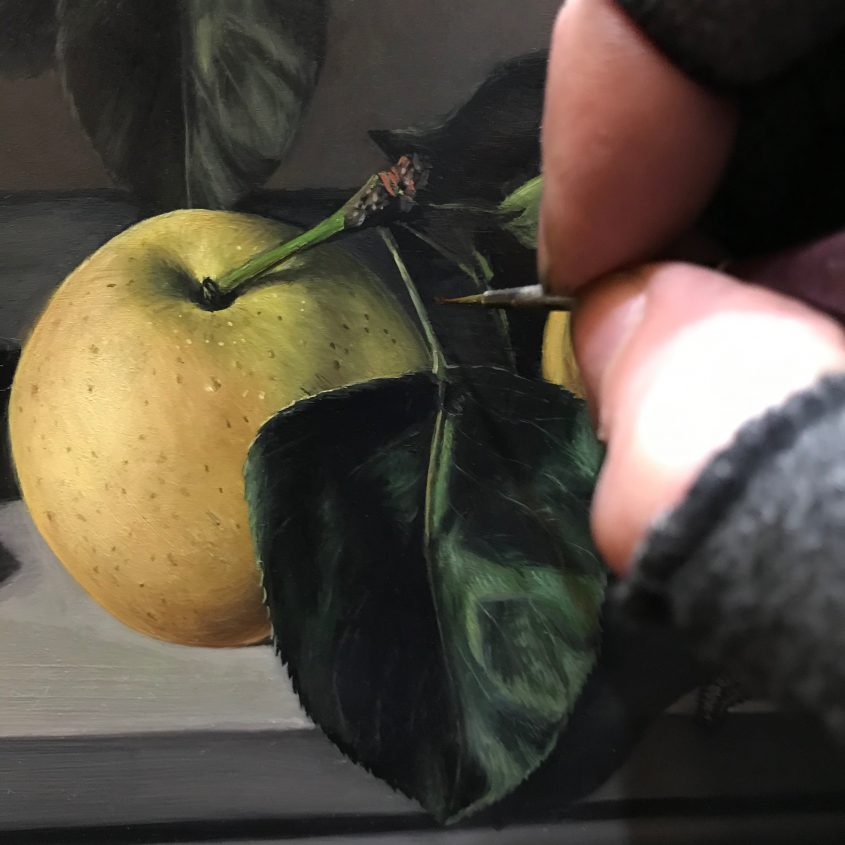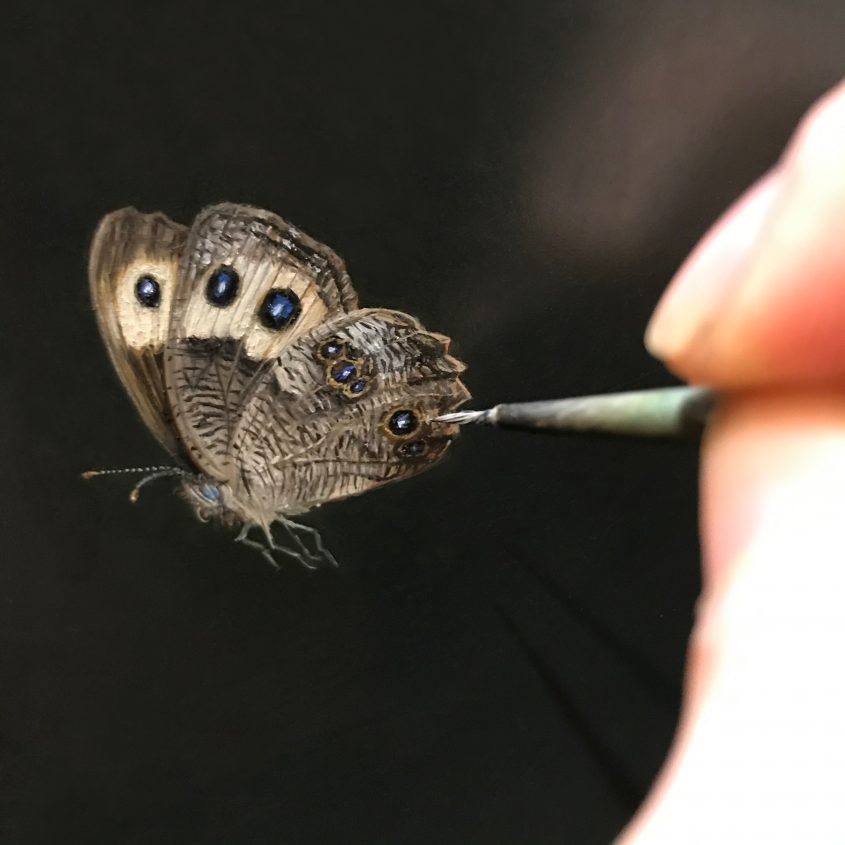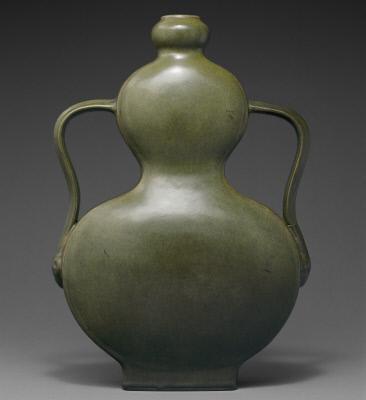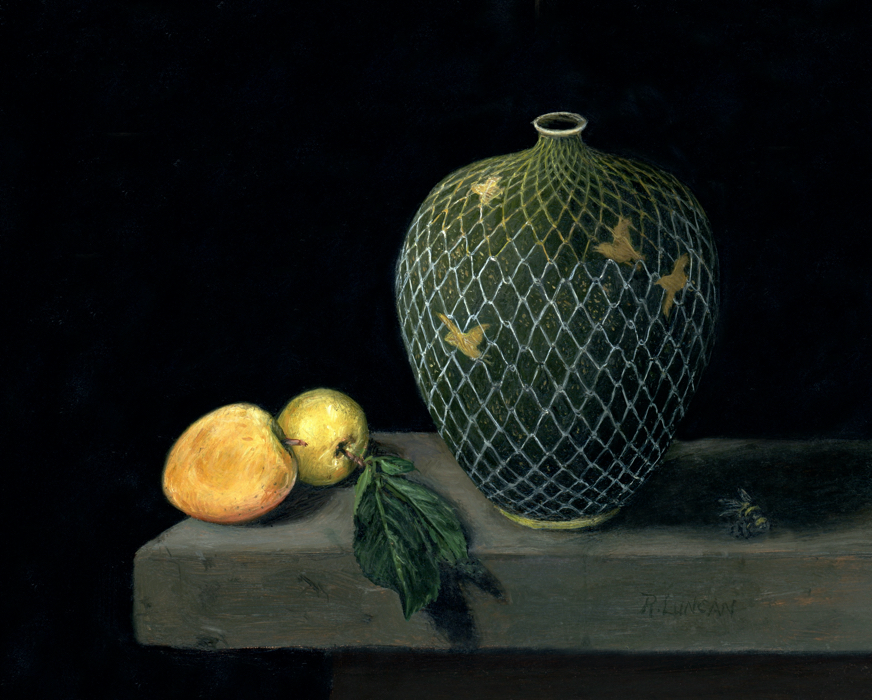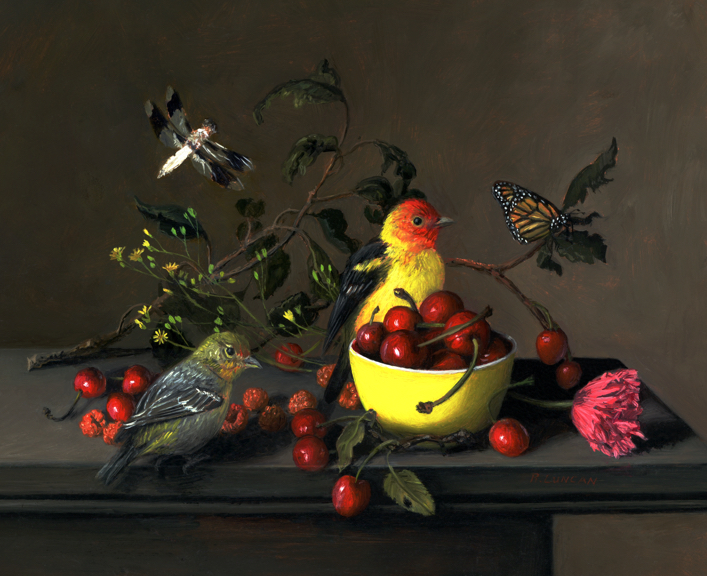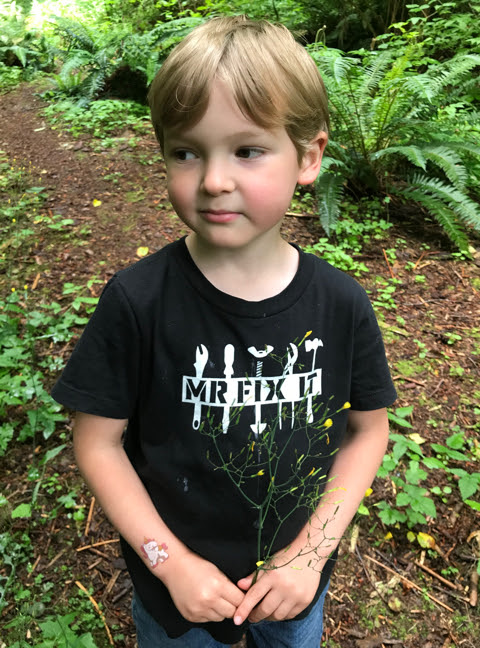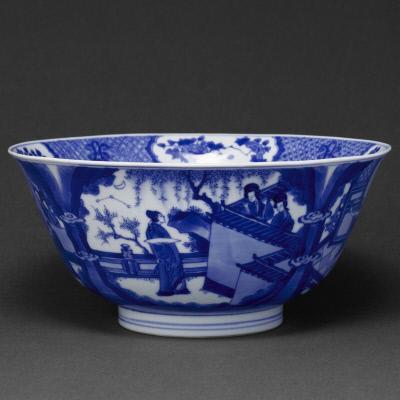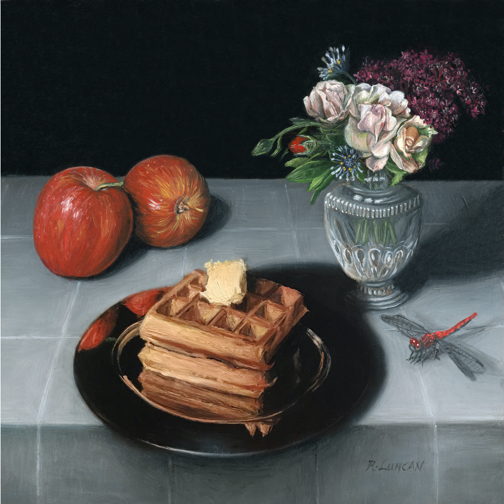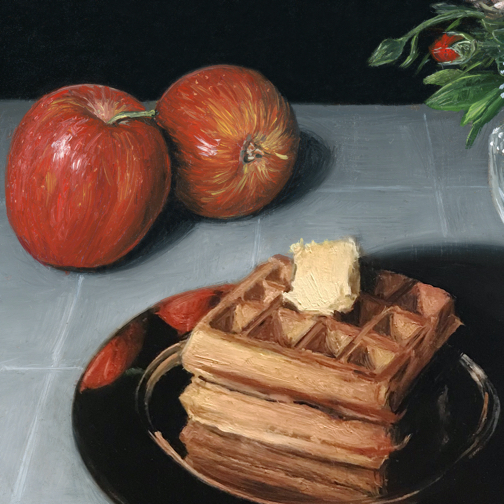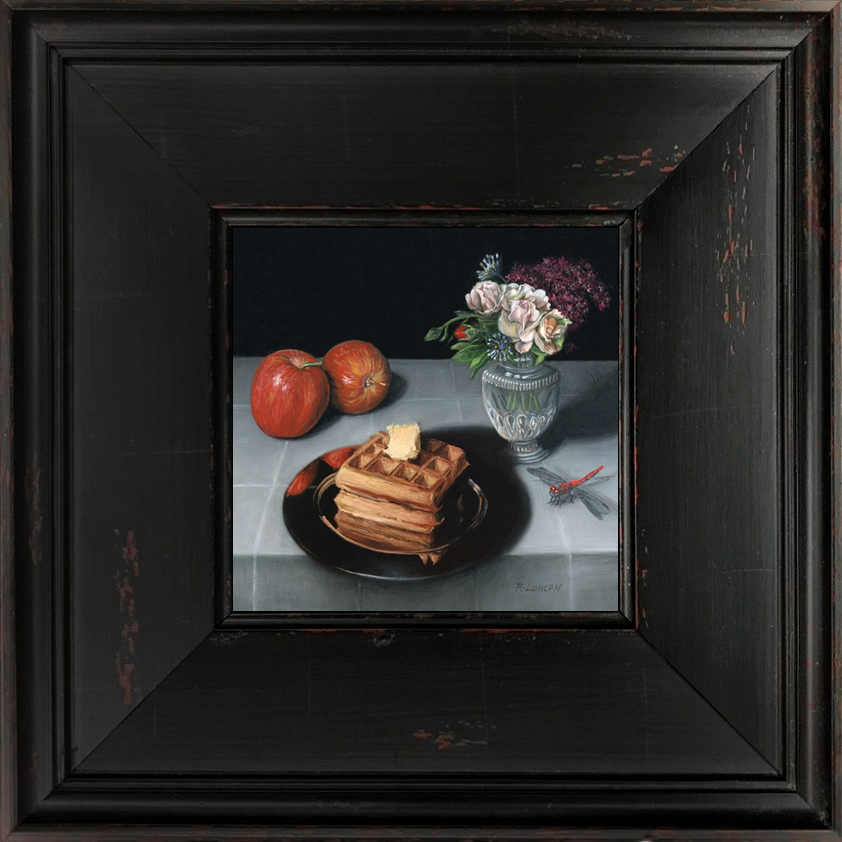Pear Harvest at Home
It’s pear season at my house, and our Bartlett and Asian pear trees are giving us more fruit than we can count — definately over a thousand this year! The branches have been so heavy with fruit that keeping up with the harvest has felt like its own full-time job.
My picky 9-year-old’s favorite treat is canned pears, so I’ve been staying up until 1am many nights, filling jars for the winter. It’s a labor of love, and one that connects directly to the rhythms of the season and to our family traditions.
Curious how I preserve all these pears? You can find my Bartlett Pear Canning Recipe here ».
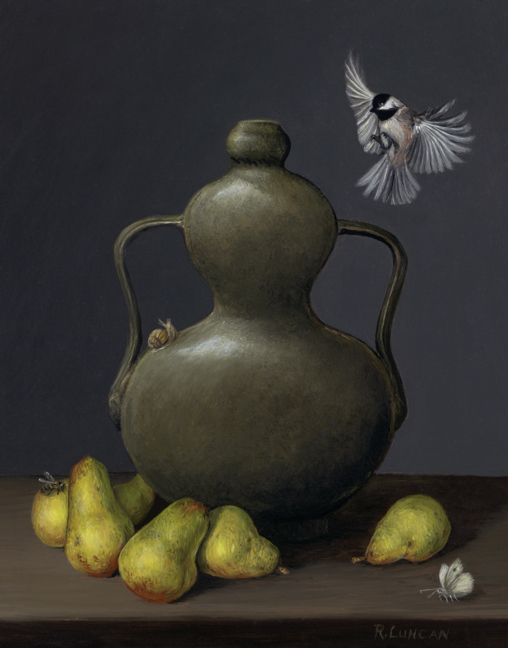
Pears as Artistic Inspiration
Over the years, pears have also made their way into my artwork. Their subtle curves, warm colors, and varied textures are endlessly inspiring. From luminous green to the golden blush of ripening fruit, I’ve found that each pear has its own personality.
In this post I’ve gathered a few of my paintings that feature Bartlett pears, including a detail from one of my larger still lifes. These works celebrate the fruit not just as food, but as a timeless subject in still life painting. Like the Dutch masters, I love the challenge of turning something so familiar into something worth lingering over.
If you’d like to see how these pear paintings connect to my ongoing projects, I’ve also included pears in my Monthly Miniatures series.
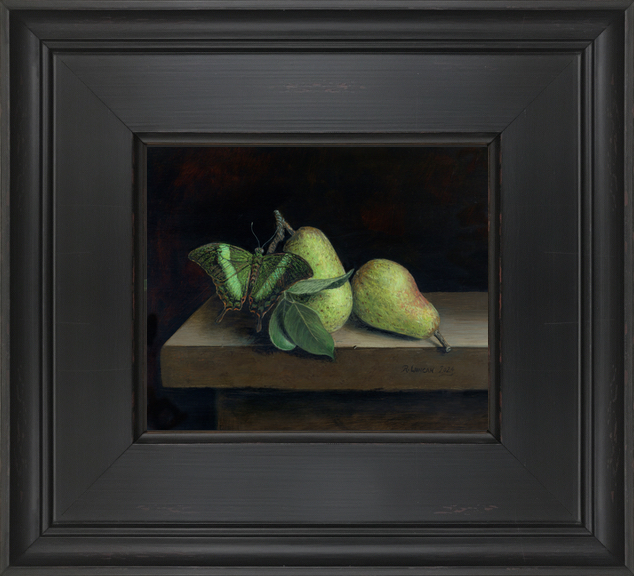
Art and Life Intertwined
As I’ve been canning late into the night, surrounded by the scent of pears and the sound of jars sealing, I’ve realized how naturally the cycles of my daily life overlap with my creative work. Harvesting, preserving, and painting all share a common thread: they ask for close attention, patience, and care.
Pears on the table and pears on the canvas — both are ways of preserving something fleeting.
If you’d like to follow along for future paintings and seasonal stories like this, you can sign up for my newsletter here.
